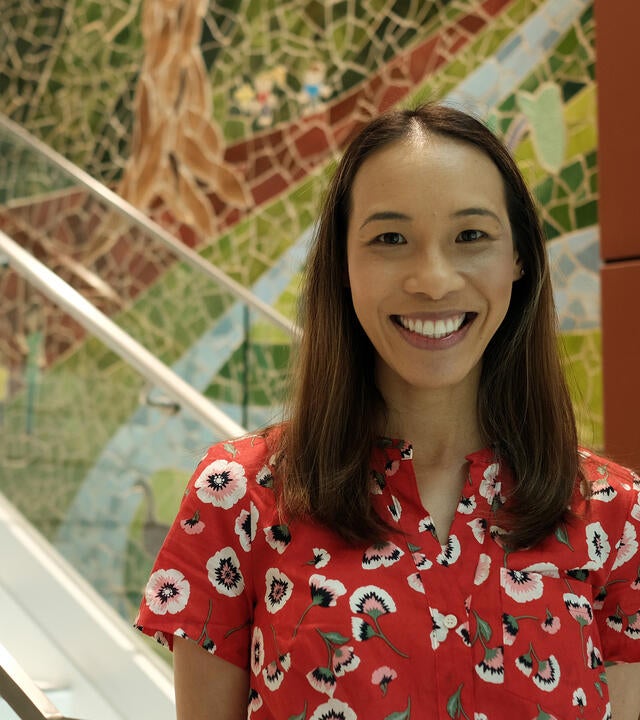
Referral Spotlight: Mary Mullis
When pediatric oncology social worker Mary Mullis first sits across from a newly diagnosed child and their family, she knows they’re in crisis. They’re in the midst of adjusting to a frightening new normal—of giving up control, beginning treatment, and processing a lot of emotional change. By directing them to everything from practical and financial assistance to academic and emotional support, Mary’s job is to arm them with the resources that can alleviate some of their burden. But, without fail, the resource that most often moves families to tears is a referral to Make-A-Wish® Hawaii.
“Their lives are turned upside down, and all they’re hearing is bad news. When you come in and share with them that they’re eligible for a wish, it’s a reminder of hope,” says Mary. “It’s important to not just discuss the treatment and what’s ahead. We’re going to be honest with them about the difficult things but also present every positive thing that is possible as well, and Make-A-Wish is a big part of that.”
Over the past five years working at Kapi’olani Medical Center for Women & Children, Mary has referred more than 70 children statewide to Make-A-Wish Hawaii, following their journeys from that very first meeting through treatment, survivorship, and their wishes come true.
To illustrate the endless possibility of a wish come true, Mary tells her patients about recent wishes to become a LEGO designer or meet a beloved character at Walt Disney World. Her favorite story, though, is Kapolei wish kid Kristen’s life-changing wish to meet the Pope, which came true in 2012. Kristen was a typical teenager transitioning from high school to college when he was unexpectedly diagnosed with bone cancer. After a powerful wish that allowed him to share a prayer with Pope Benedict XVI, Kristen went on to overcome his illness and graduate from the University of Hawaii.
“[Kristen’s wish] is a reminder that a wish can sound impossible, but Make-A-Wish is what that’s about—making things that are impossible possible,” she explains. And when a wish like Kristen’s comes true, Mary says, it brings everyone together: “It fills people with joy. The family, the medical team, the nurses…we just see how everybody is so excited.” After excitedly answering questions of ‘Where are you going?’ or ‘What are you doing?’ leading up to the wish, it’s rewarding and re-energizing for a child to return to the hospital “full of wonder,” as Mary says, and armed with stories, photos, and lasting memories.
Aside from the incredible anticipation and excitement of a wish come true, Mary says a significant part of what makes wishes so powerful is the opportunity it allows children and their families to take back control of their lives and their stories.
In turn, sharing those positive experiences with other patients and their families creates a community that provides even more support. “Their story connects them to other families who understand not just the hardship of treatment but the joy that a wish brings,” says Mary.
Because she works solely with cancer patients, most of the children Mary sees are eligible for a wish. But she encourages medical professionals specializing in other conditions to make referrals as well—to look at all aspects of care and to consider how the anticipation of a wish can bring so much benefit to a child battling a critical illness.
“I’m so lucky to work with a team that really values Make-A-Wish and sees its emotional value,” she says. “It takes a whole medical village and a whole community to support children and their families.”
To learn more about wish eligibility or to make a referral, visit md.wish.org.